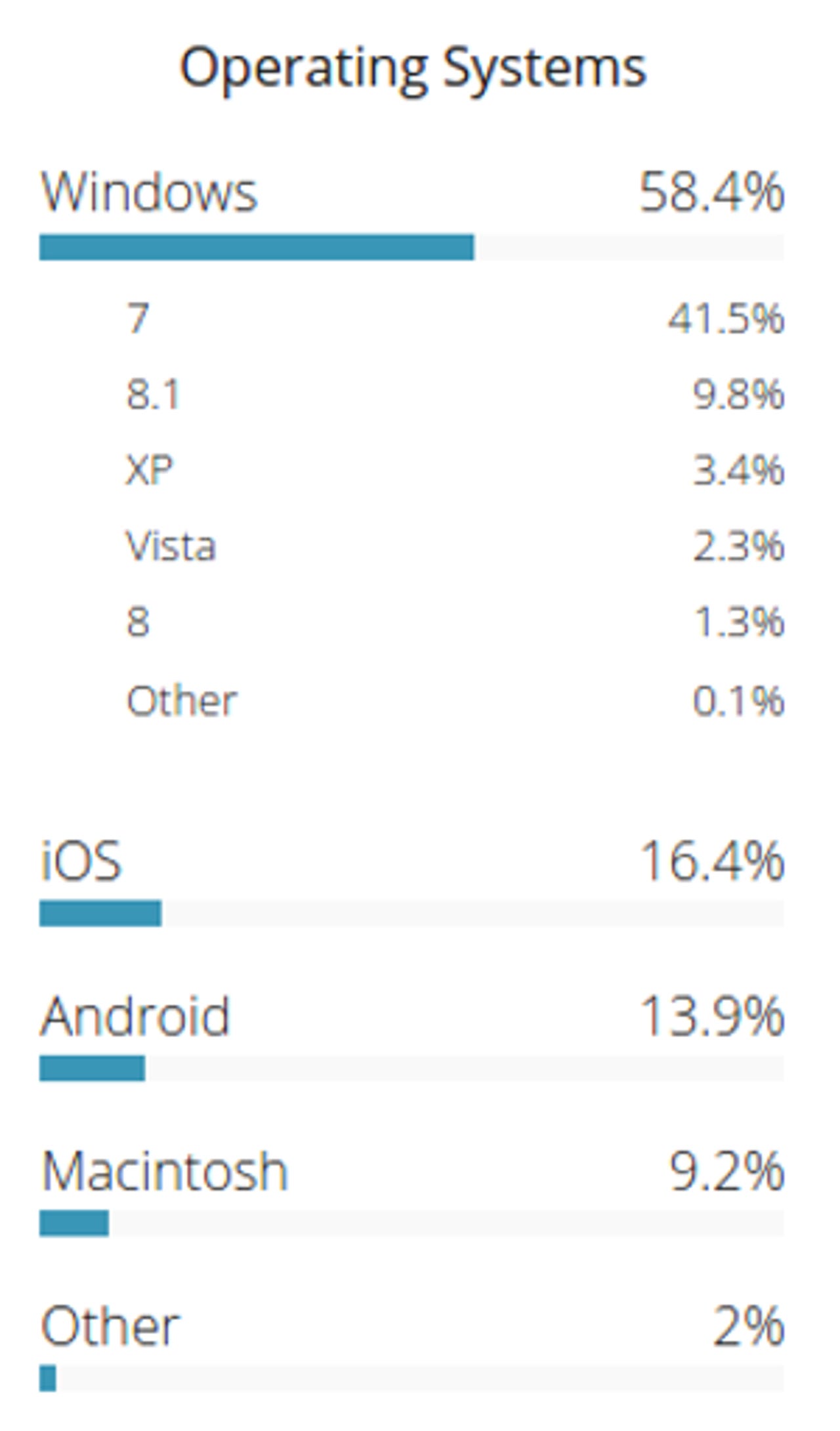The most popular US end-user operating systems, according to the federal government

Surprise! The federal government's Digital Analytics Program (DAP) has found that Windows is the most popular end-user operating system with 58.4 percent of all government web site visitors. What's more interesting though is what versions of Windows we're using and what's number two and three behind Windows.

I know that Apple iOS leading Android will puzzle some of you. True, globally Android devices are more popular than the iPad and iPhone. But in the fourth quarter of 2014, "in the US, Apple iOS overtook Android for the first time since this time in 2012, albeit by the slimmest 0.1% margin," said Carolina Milanesi, chief of research at Kantar Worldpanel ComTech. Kantar uses smartphone sales data for its analysis.
Globally, it's a different story. Kantar's numbers for the 2015's first quarter showed that Android has 66.1 percent of the European market. Android is even more dominant in countries such as Brazil, 90.8 percent; Argentina, 83.5 percent; and Australia where Android is just ahead of iOS, 46.9 percent to 42.4 percent. So as a world mobile operating system, Android leads; in the US, iOS is the top dog, albeit not by much.
The other mobile operating systems? They barely register. Windows Phone has 0.38 percent and Blackberry comes in at 0.11 percent.
On the desktop, we all know Windows is the top dog, but the DAP data reveals that Windows 7 is by far the most popular version with 41.5 percent. Windows 8.x, which I've thought to be a market-failure from the start, turned out worse then even I had thought. All together Windows 8.x market share came to a pathetic 11.1 percent, 9.8 percent to Windows 8.1 and 1.3 percent to Windows 8.0
The good news for Microsoft is that XP, setting aside NetMarketShare's odd results, is actually doing far worse than we expected. DAP's numbers reveal that far from having over 10 percent of users still using the obsolete Windows XP, only 3.4 percent are using it. Vista -- remember Vista? -- came in last at 2.3 percent.
After the Windows family, the next most popular operating systems is Mac OS X with 9.2 percent. Historically, the reports from NetMarketShare and StatCounter have Mac OS X lower than this. For example NetMarketShare has Mac OS X at 6.9 percent for February 2015, while StatCounter has it at 8.2 percent for the same month.
DAP doesn't break down the last two percent of operating systems. A closer look at the data shows that it doesn't try to carve out Chrome OS users from the most popular web browser, Chrome. With a little digging, I found that Linux, with a mere 0.67 percent, came in lower than I had expected or NetMarketShare and StatCounter had shown in the past.
The government also lists 0.86 percent of operating systems as "other." Since DAP doesn't distinguish mobile and desktop operating systems from each other, I presume this last group is made up of more obscure mobile operating systems, such as Firefox OS and Sailfish, and relatively unknown desktop OSs including FreeBSD, eComStation, and ReactOS.
Related Stories:
- Most popular US web browsers, according to the federal government
- iOS versus Android. Apple App Store versus Google Play: Here comes the next battle in the app wars
- Windows 8, 8.1 overtakes XP on new Netmarketshare numbers
- Weird science: How shaky web usage reports distort our view of tech markets
- Top 3 holiday computers sold by Amazon were Chromebooks